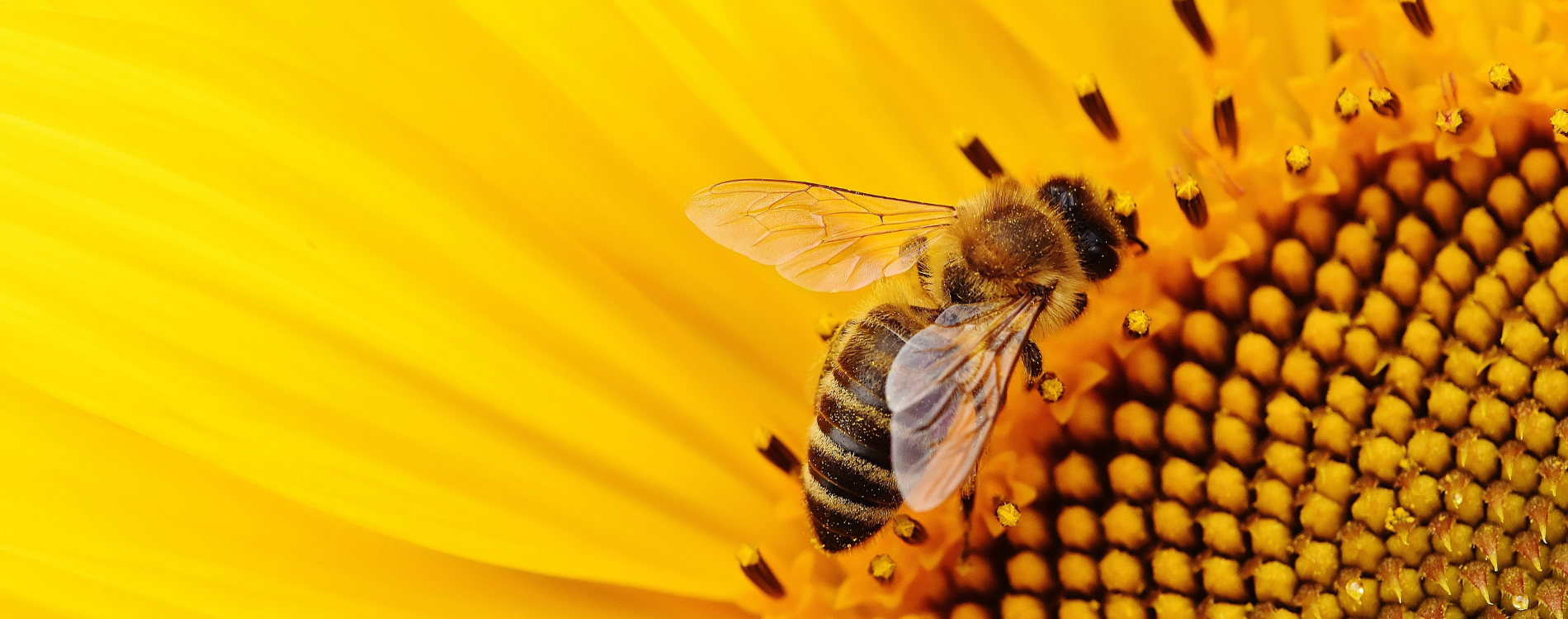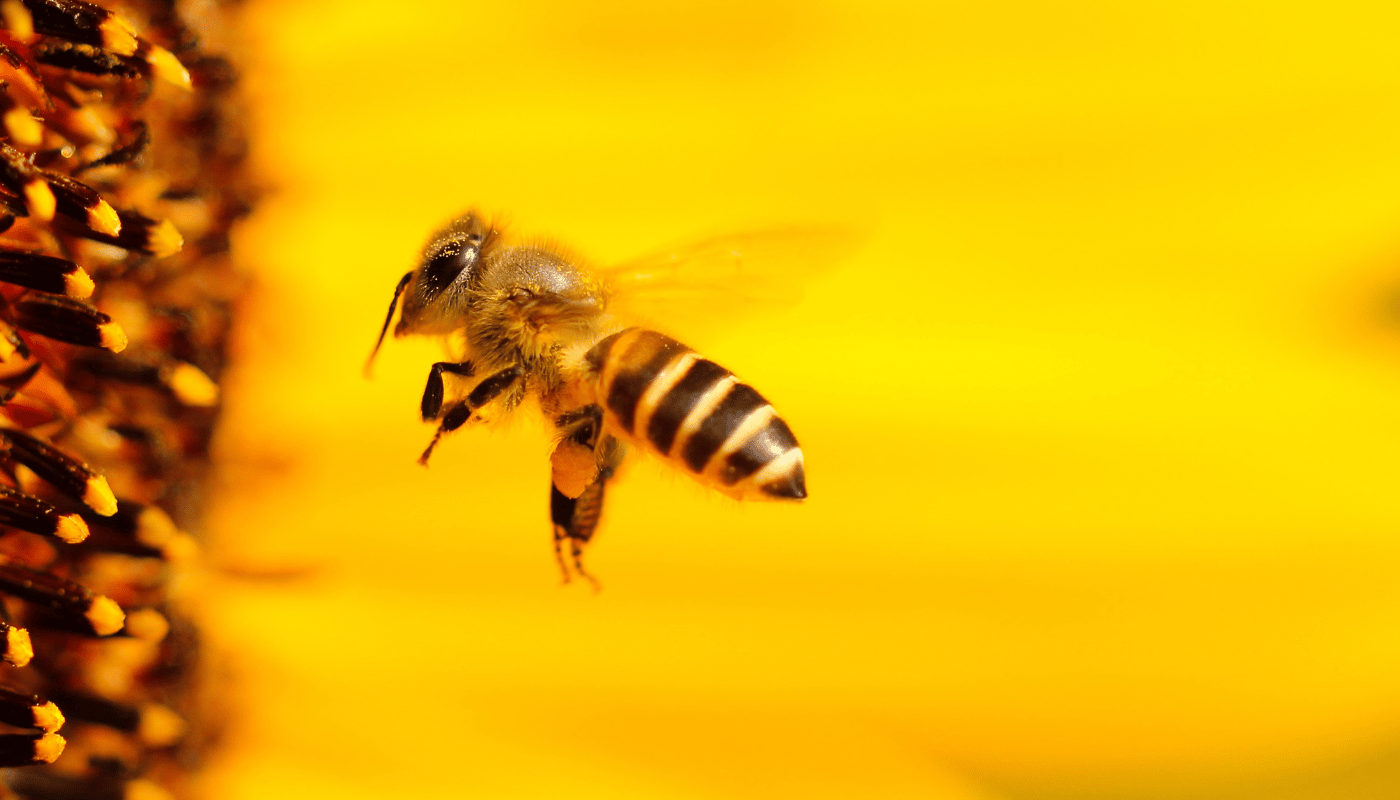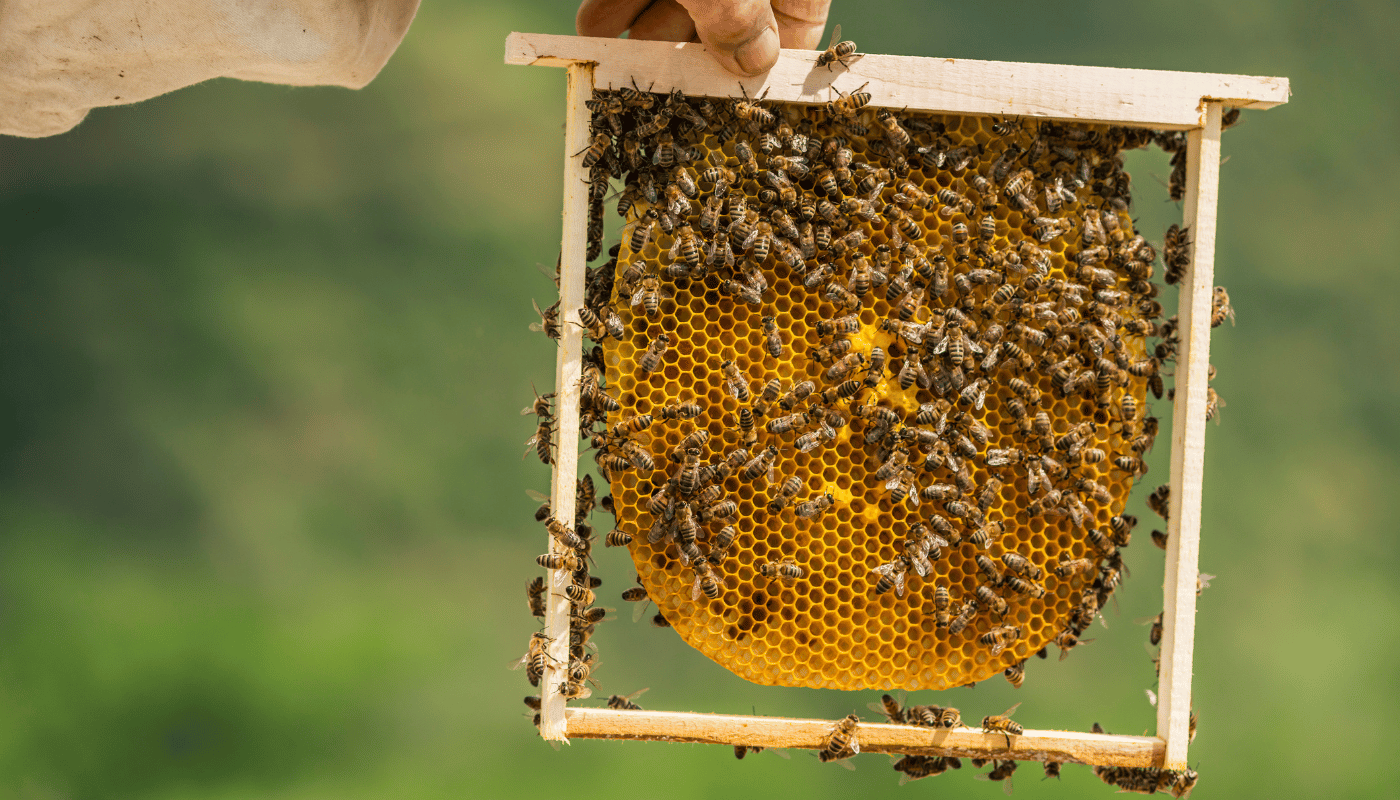What Every Beginner Should Know
Understanding Bee Behavior
In our blog, we dive deep into these fascinating behaviors, offering insights and tips to help you navigate the world of beekeeping with confidence.

The Role of the Queen Bee
Learn about the queen’s vital role in the hive, including egg-laying, pheromone production, and maintaining hive harmony.
Worker Bees and Their Duties
Discover the various tasks worker bees perform, from foraging and nectar collection to hive cleaning and brood care.


Communication / Waggle Dance
Understand how bees communicate the location of food sources to their hive mates through intricate dance patterns.
Swarming: Why Bees Leave the Hive
Gain valuable insights into swarming behavior, understand why it occurs, and learn how to effectively manage it to keep your colony healthy.


Our Story
Essential Beekeeping Tools and Equipment
We’ve covered these essential tools and equipment in detail on our blog, where we explain how to choose, use, and maintain each one to enhance your beekeeping journey:
Each of these tools plays a vital role in ensuring the smooth operation of your beekeeping activities. Having the right equipment not only makes your tasks easier but also contributes to the overall health and productivity of your hive.
Beekeeping Hurdles
Common Challenges in Beekeeping

Varroa Mite Infestation
Varroa mites are one of the most significant threats to honeybee colonies, causing weakness and spreading diseases.

Swarming
Swarming occurs when a large group of bees leaves the hive with the old queen to form a new colony. This can reduce your hive’s productivity.

Predator Problems
eekeepers often face challenges from pests like wax moths, small hive beetles, and predators.

Weather-Related Stress
Beekeeping is a rewarding but complex endeavor that comes with its share of challenges.
Beekeeping FAQ
What is the best time of year to start beekeeping?
The best time to start beekeeping is in early spring, typically around March or April, depending on your location. This allows the bees to establish their hive, build up their population, and gather resources during the warmer months. Starting in spring gives your colony the best chance to thrive before winter arrives.
How do I choose the right hive kit for my needs?
Choosing the right hive kit depends on your experience level, the climate in your area, and your goals as a beekeeper. For beginners, a Langstroth hive kit is a popular choice due to its standardized components and ease of use. Consider the size of the hive, the materials (wood or plastic), and whether the kit includes all essential tools like frames, a smoker, and a hive tool. It’s also important to assess if you need additional features like a queen excluder or a feeder.
How can I protect my bees from Varroa mites?
Protecting your bees from Varroa mites involves regular monitoring and applying effective treatments. Start by conducting routine inspections and using sticky boards or alcohol washes to check for mites. Treatment options include chemical treatments like formic acid or oxalic acid, as well as natural methods such as powdered sugar dusting or drone brood removal. Combining different strategies, known as Integrated Pest Management (IPM), is often the most effective approach.
What should I do if my bees swarm?
If your bees swarm, it means a portion of your colony, including the old queen, has left to form a new hive. To manage swarming, you can try to catch the swarm and place it in a new hive box. Preventive measures include regular hive inspections to monitor overcrowding, providing sufficient space by adding supers, and performing splits if the colony is growing too large. Keeping your hive well-ventilated and ensuring the queen has room to lay eggs can also reduce the likelihood of swarming.
How often should I inspect my hive?
During the active beekeeping season (spring through fall), you should inspect your hive every 7 to 10 days. Regular inspections allow you to monitor the health of the colony, check for signs of disease or pests, ensure the queen is laying eggs, and assess the hive’s food stores. In winter, inspections should be less frequent, focusing mainly on ensuring the hive is properly insulated and has enough food reserves.
What type of protective clothing do I need?
Essential protective clothing for beekeeping includes a bee suit or jacket with an attached veil, gloves, and long pants. The bee suit should be made of light-colored, thick material to minimize the chances of stings. Gloves should be sturdy yet flexible, allowing you to handle the hive tools effectively. A veil is crucial to protect your face and neck from stings, while boots or shoes that cover your ankles will protect your feet.
How do I extract and bottle honey from my hive?
To extract honey, start by removing the frames filled with capped honey from the hive. Use an uncapping knife to carefully remove the wax caps from the honeycomb cells. Place the frames in a honey extractor, a device that uses centrifugal force to spin out the honey. Once extracted, strain the honey through a fine mesh or cheesecloth to remove any debris or wax particles. Finally, bottle the honey in clean, dry jars and seal them tightly to preserve freshness.
What should I do to prepare my hive for winter?
Preparing your hive for winter involves ensuring your bees have enough food, adequate insulation, and protection from moisture. Check that the hive has sufficient honey stores (at least 60-80 pounds depending on your climate) to last through winter. Consider feeding your bees with sugar syrup or fondant if needed. Insulate the hive with foam boards or a moisture quilt to retain heat and reduce condensation. Ensure the entrance is reduced to prevent drafts and keep out pests. Regularly check the hive’s weight and condition throughout winter to make adjustments if necessary.

Harvesting Honey: Tips for Your First Extraction
Harvesting honey is one of the most rewarding aspects of beekeeping, but it requires careful planning and the right techniques to ensure a successful and safe extraction. Before you begin, make sure your bees have had enough time to cap the honeycombs, which indicates that the honey is ready for harvesting. Below is a helpful guide that outlines key steps, tips, and our expert opinions for your first honey extraction.
| Step | Description | Our Opinion |
|---|---|---|
| Choose the Right Time | Harvest honey on a warm, dry day when bees are actively foraging. Ensure that most frames have at least 80% capped honey for optimal moisture content. | Timing is crucial. A dry day helps prevent moisture from affecting the honey, ensuring a better quality harvest. |
| Gather Your Tools | Prepare all necessary equipment, including an uncapping knife, honey extractor, buckets, and strainers. Wear protective clothing to avoid stings. | Being organized and ready before starting will save time and reduce stress during the extraction process. |
| Remove the Frames | Gently remove the frames filled with honey from the hive, brushing off any bees back into the hive. Be careful not to crush any bees during this process. | Handle frames with care to minimize stress on the bees and prevent honey loss. |
| Uncap the Honeycomb | Use an uncapping knife or fork to carefully remove the wax caps from the honeycomb cells. Ensure you expose all the honey for efficient extraction. | Take your time during uncapping; rushing can lead to waste and uneven extraction. |
| Extract the Honey | Place the uncapped frames in a honey extractor and spin them to extract the honey. The centrifugal force will draw the honey out of the cells. | A good quality extractor makes a big difference in efficiency and ease of use—consider investing in one. |
| Strain and Bottle | Strain the extracted honey through a fine mesh or cheesecloth to remove any wax particles or debris. Pour the honey into clean jars and seal them tightly. | Cleanliness is key here; ensure jars and strainers are sterile to keep your honey pure and long-lasting. |
Once you have successfully extracted and bottled your honey, store it in a cool, dry place. Properly sealed honey can last indefinitely, making it a wonderful and sustainable reward for your hard work as a beekeeper. Remember, your first extraction may take some time as you get used to the process, but with patience and practice, it will become a smooth and enjoyable part of your beekeeping journey.
Latest News & Articles
Stay updated with the latest trends, tips, and insights in the world of beekeeping. Whether you’re a beginner or a seasoned apiarist, our articles cover everything from hive management and bee health to honey harvesting techniques and sustainable practices.




